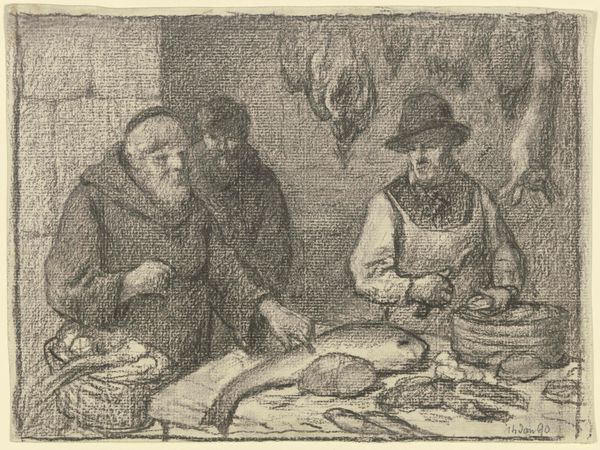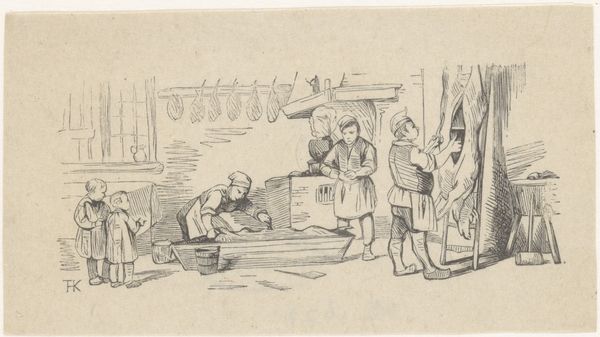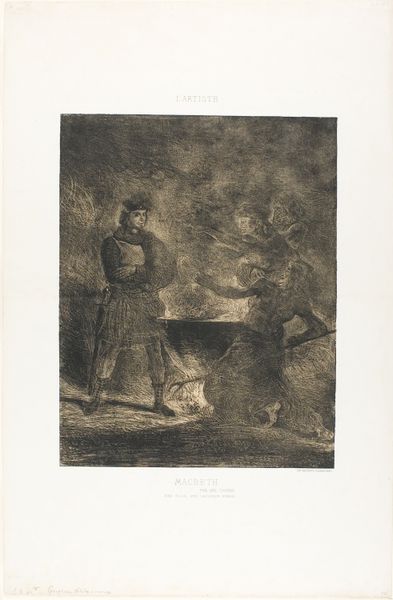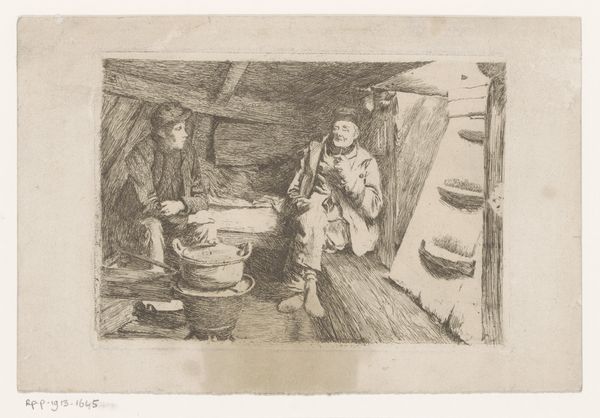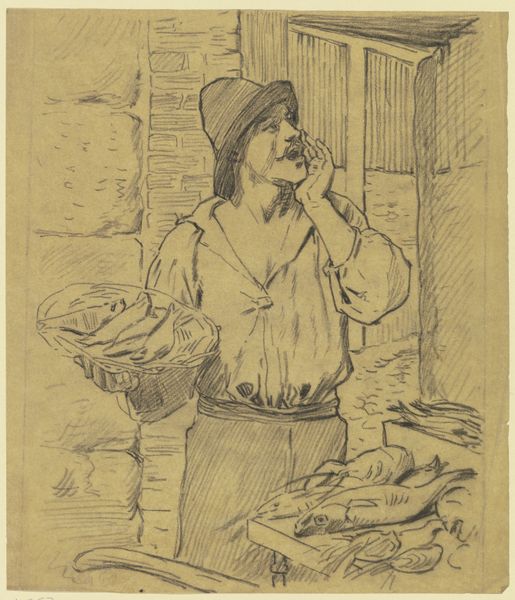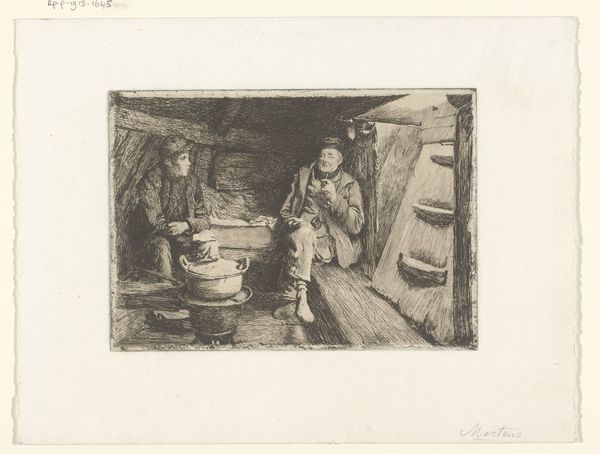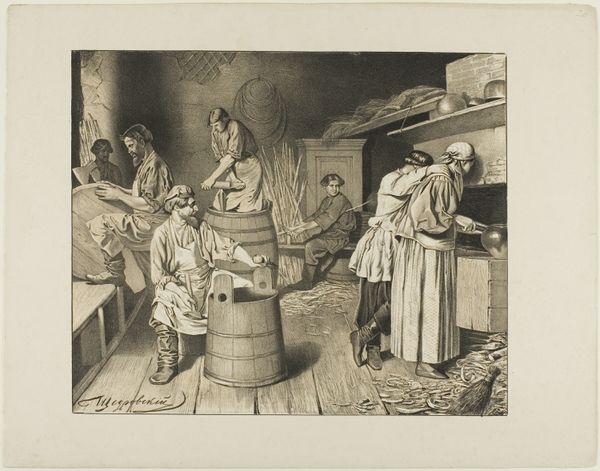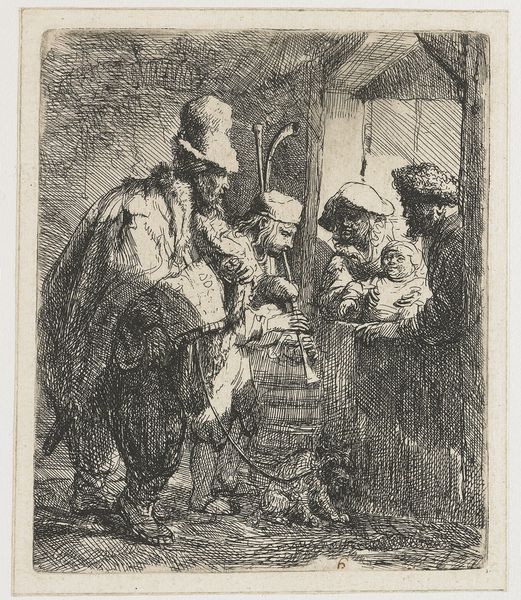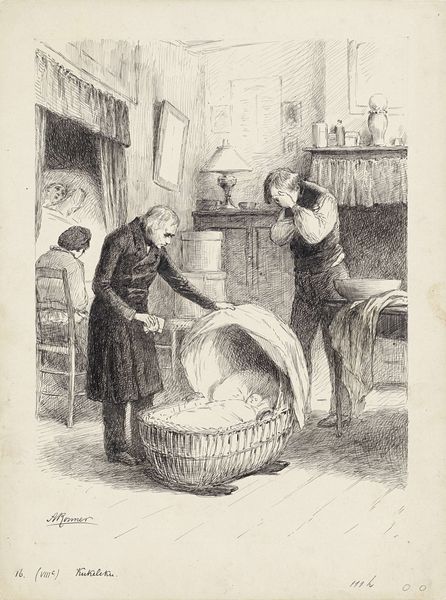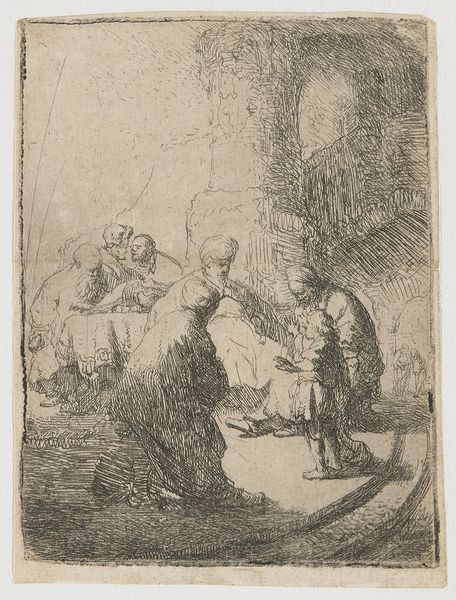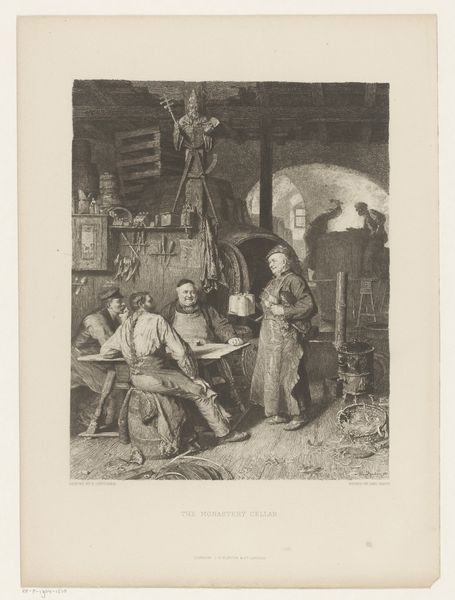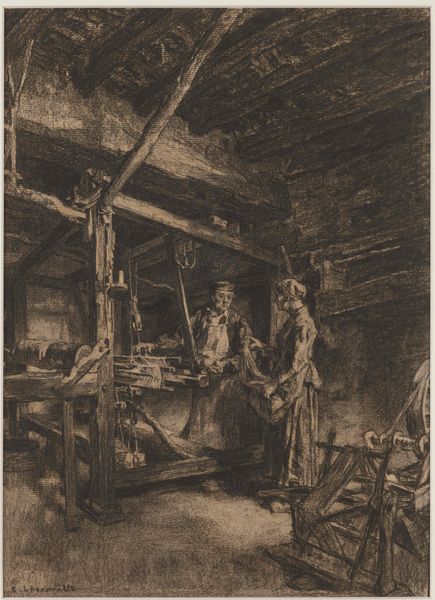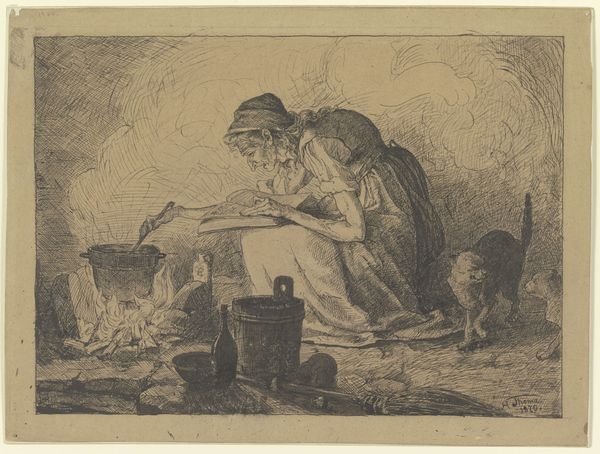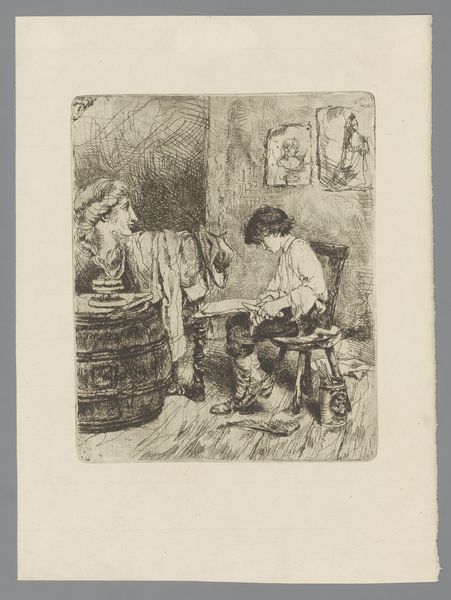
Copyright: Public Domain
Editor: Right, let's talk about Otto Scholderer's "At the venisonmonger's," a drawing done around 1890 with pencil and chalk. It's currently held at the Städel Museum. There's a somber, almost gray stillness about this piece. I'm really intrigued by its muted tones and detailed depiction of this somewhat morbid subject. What strikes you most when you look at it? Curator: It takes me straight back to wandering through German markets. The smell of smoked meats, the bustle, and the… heft of existence hanging right there in front of you. Scholderer captures that so keenly, doesn’t he? It’s not just observing a scene, it's stepping into a very specific atmosphere. It feels strangely familiar, like something I've known, maybe even dreamt. Look at how he uses shadow— it almost feels like a stage setting, doesn’t it? Editor: It really does! And the figures seem caught in these very defined roles – the seller, the customer, even that figure in the back. Was Scholderer known for this kind of theatrical framing, this sort of staged realism? Curator: In a way, yes. He takes these everyday moments and elevates them. It’s not about glorifying anything; more about distilling something essential about human life – the commerce, the labor, the way we provide for ourselves, and perhaps even a commentary on mortality. The Renaissance-like treatment of a mundane scene is what gives it its weight, I think. He's imbuing this genre scene with significance, inviting us to pause and really consider what we're seeing, isn't he? Editor: Absolutely, I see it now. It's more than just a shop; it's a moment frozen in time, layered with history. Curator: Precisely! And isn't that the power of art at its finest? Editor: Definitely gives you a lot to think about, even something as seemingly simple as venison. Curator: Exactly! Each viewing unearths some new nuance of interpretation and appreciation.
Comments
No comments
Be the first to comment and join the conversation on the ultimate creative platform.
